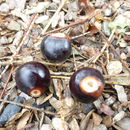mk
имиња во трошки


Ungnadia speciosa là một loài thực vật có hoa trong họ Bồ hòn. Loài này được Endl. miêu tả khoa học đầu tiên năm 1833.[1]
Ungnadia speciosa là một loài thực vật có hoa trong họ Bồ hòn. Loài này được Endl. miêu tả khoa học đầu tiên năm 1833.
Ungnadia Endl., 1835
Единственный видУнгнадия прекрасная (лат. Ungnadia speciosa) — листопадные деревья, вид монотипного рода Унгнадия (Ungnadia) семейства Сапиндовые (Sapindaceae).
В диком виде произрастает в США (штаты Техас и Нью-Мехико) и на севере Мексики. Натурализировано повсеместно.[2]
Растёт по долинам рек и известковым склонам.
Кустарники или деревья высотой до 10 м. Побеги с серым или желтоватым опушением, позже оголяющиеся, тёмно-коричневые, почти чёрные.
Листья очерёдные, напарноперистые, длиной 11—30 см, шириной 12—20 см; листочки в числе 5—7 (до 9) пар, от продолговато-яйцевидных до яйцевидно-ланцетных, длиной 6—10 см, на верхушке оттянутые, с округлым основанием, неправильно-пильчатые, сверху блестящие, тёмно-зелёные, снизу светло-зелёные, боковые почти сидячие, конечные на черешке.
Цветки обоеполые или тычиночные, зигоморфные, диаметром около 2,5 см, розовые, в ложных, боковых зонтиках; цветоножки длиной 3—5 см. Чашечка спайнолистная, из 4—5 чашелистиков; лепестков 4—5; тычинок 7—10, обычно 8; завязь на ножке, 3-гнездная, с двумя семяпочками в каждом гнезде, в тычиночных цветках рудиментная; столбик нитевидный.
Плод — коробочка, широко грушевидная, диаметром около 5 см, обычно с одним семенем в гнезде. Семена обратнояйцевидные или почти шаровидные, диаметром около 1,5 см, блестящие.
Цветёт апреле — мае. Плодоносит в октябре.
Унгнадия прекрасная (лат. Ungnadia speciosa) — листопадные деревья, вид монотипного рода Унгнадия (Ungnadia) семейства Сапиндовые (Sapindaceae).